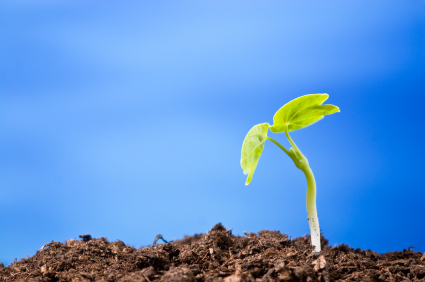How to Harvest Seeds From Your Garden

Eating From Your Own Backyard
There are many reasons that you may choose to harvest seeds from your garden. You may wish to save money by using your own seeds instead of having to purchase pricey annuals next year. You also may be interested in growing a particular variety of seed in the future, and you are concerned that you will be unable to find it again. Seeds can be traded among friends or given as a gift. Whatever the case may be, you don’t have to be an expert gardener in order to harvest seeds from your garden. By following some simple steps, you can easily harvest seeds from most plants and save them until you are ready to plant them again next year.
Preparing to Harvest Seeds
First, gardeners are typically advised to deadhead flowers, or remove the spent blooms from the flowers. This encourages further growth from the plant and keeps the flowers blooming throughout the growing season. If you wish to harvest seeds, however, you should leave the spent blooms on the stem of the plant and allow them to die naturally. This will allow the plant to focus its energy on producing seed, rather than on producing new blooms.
Eventually, a seedpod or seedhead will replace the spent flower bloom. Do not remove it immediately; instead, leave it on the stem of the plant as long as possible, which allows the seeds to further develop and ripen. Once the seedpod completely dries out, turn’s brown, or cracks open, the seeds are generally ready to harvest.
Harvesting the Seeds
Remove the entire seedpod from the plant and shake it into a lunch-sized brown paper bag in order to dislodge the seeds into the bag. If any seeds fall from the plant into the soil, they typically will come up on their own next year; this process is called self-sowing, and many annuals propagate themselves this way. If you like where your annuals are situated and don’t mind them growing there again next year, you may wish to simply allow them to self-sow.
If you discover that the seeds are not completely dry once you have removed the seedpod from the stem of the plant, you will need to allow them to completely dry. Otherwise, the seeds will get moldy during storage over the winter months. You can hang the seedpods up or lay them flat on a newspaper or paper towel, out of direct sunlight, and allow the seeds to further dry before placing the seeds into a bag for storage. Once the seeds are dry, you can break open or crush the seedpod in order to extract the seeds, separating them from the seedpod material before storing them in the bag.
What about Vegetables or Fruits?
Vegetables seeds should be extracted when the vegetables are at their peak, before they become overripe and start to decay. If the seeds are inside a wet and pulpy fruit or vegetable, you should extract the seeds, lay them out on newspaper and allow them to dry fully before storing them. It is okay to wash off the seeds before letting them dry.
Harvested seeds should be stored in paper envelopes or bags, but generally not in plastic containers, which can promote mold and premature germination. Keep the harvested seeds at a cool temperature, and label your seeds with the name of the plant, the date, and any growing instructions for future reference.
Additional Resources
- Harvesting Seeds From Your Garden, by Essortment.com
- How to Harvest Fruit, Vegetable and Flower Seeds, by Howtogardenadvice.com
- 6 Reasons to Start Your own Seeds, by Bayeradvanced.com
- How to Harvest, Process and Store Vegetable Seeds, by Robert Wayne Atkins at Survivingthemiddleclasscrash.wordpress.com
- Storing Seeds, by Bonnie L. Grant at Gardeningknowhow.com
- Storing Survival Garden Seeds, by Allthingsemergencyprepared.com
- Harvesting Seeds, by Theseedsite.com.uk
- 150 Farmers Receive Training on Seed Production, by Businessdayonline.com
- How to Harvest Turnip Greens and Seedpods, by Homeguides.sfgate.com
Videos
- How to Harvest and Store Sunflower Seeds, by Yolanda Vanveen at enow.co.uk
- How to Harvest Seeds from a Vegetable Garden, by Robert Linde at ehow.com
- How to Harvest Your Own Seeds, by Green Desert.TV
- Saving Seeds From Your Garden, by Robyn Streeter at Cookingupastory.com
- Collecting Seeds, by Barbara Pierson at Finegardening.com
- Events and Courses, by Irish Seed Saver Association at Xsdnet.com
- Organic Seed Alliance Courses, by Seedalliance.org
- Free Online Horticulture Courses, by Educationportal.com
Books
- The Complete Guide to Saving Seeds, by Robert E. Gough and Cheryl Moore-Gough at Amazon.com
- Secrets to Plant Propagation, by Lewis Hill at Amazon.com
- From Seed to Harvest, by Octavia E. Butler
Apps
- The Harvest, by Tribal Seeds at Amazon.com
- 10 Gardening Apps for iPhone, by Cleanairgardening.com
- Plant HD, by ArunRamamoorthy, available on iTunes for a fee
